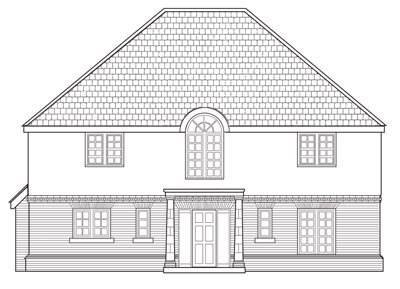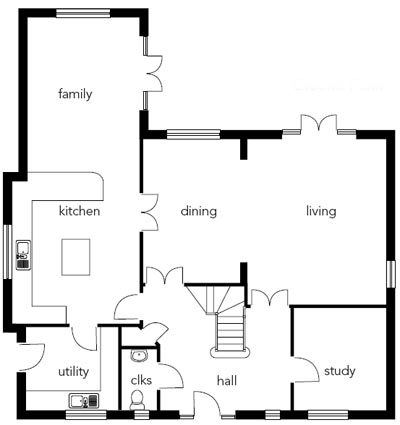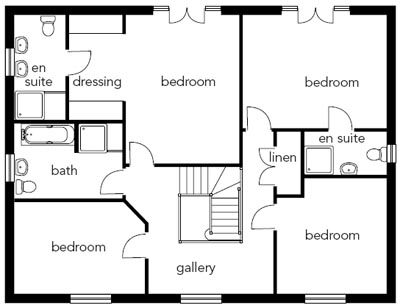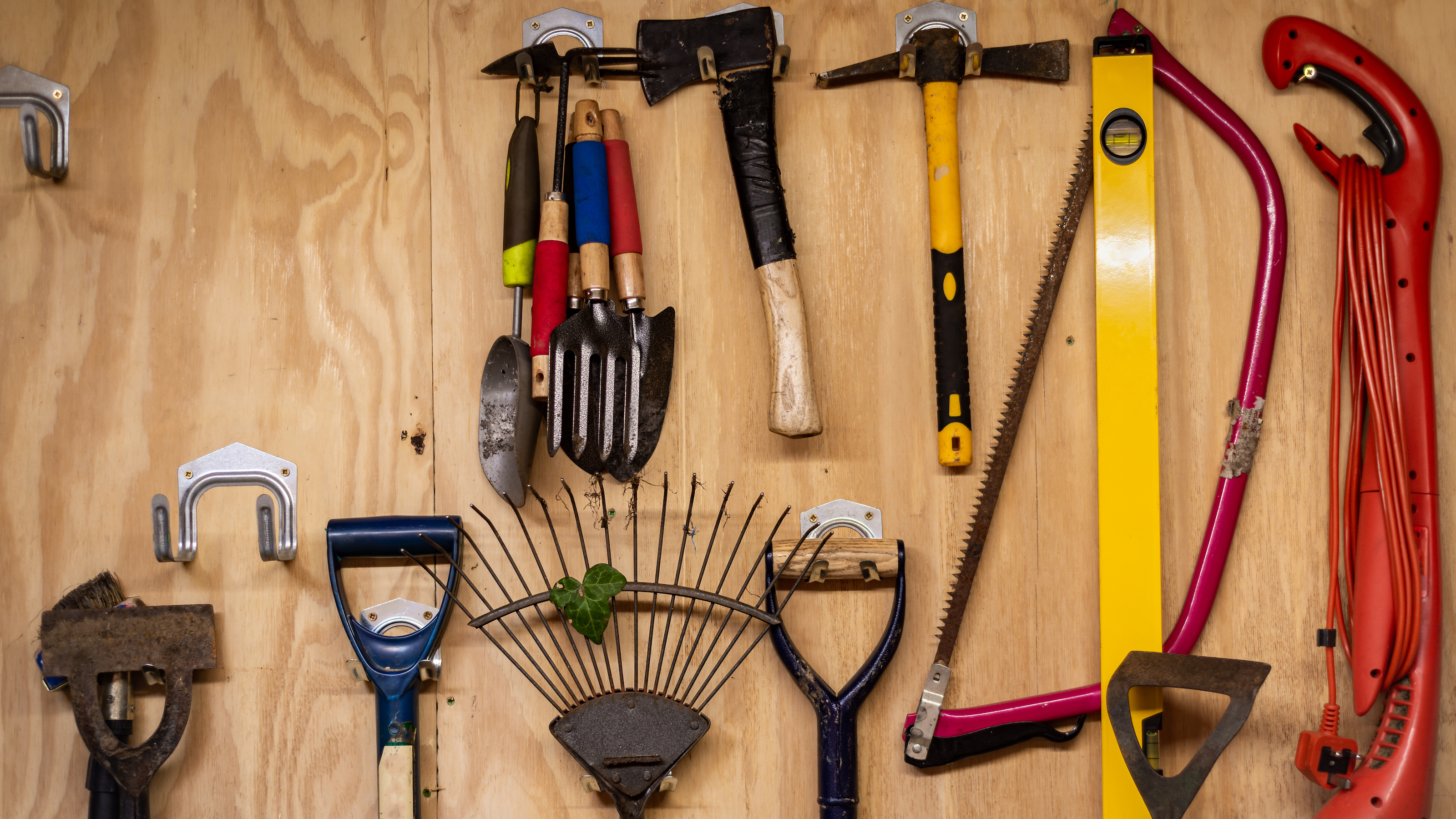How much does drainage cost? Your price guide to new drains
Our guide explains all about drainage costs, including how much installation is likely to add up too as well as what to expect to pay for materials and how to make savings

Wondering what your drainage costs are going to come in at? While choosing drainage systems might not be quite as exciting as picking out a sparkly new kitchen, it is an important part nonetheless of many self build, renovation, conversion and even extension projects.
Of course much of this will depend on the type of drainage system you end up opting for.
"Connecting to mains drainage is not the only option — you can run your foul waste to a septic tank or a sewage treatment plant on your land," explains author of the Housebuilder’s Bible, Mark Brinkley. "This is a very common method of disposing of waste in rural locations where mains drainage is not present."
What to consider when calculating drainage costs
When calculating your drainage costs it is important to know exactly what you are paying for to avoid any nasty surprises later down the line.
"Internally, there is a web of small waste pipes running from sinks, basins, showers and toilets. These all feed into a soil stack, which drops down into an underground pipe, which then, in theory, falls gently away from the house towards public sewers or an on-site tank, depending on how the system is set up," explains Mark Brinkley.
While the above-ground pipes will usually be installed and organised by a plumber, the below ground pipes – also known as drainage – are most commonly put in place by the groundworkers while they dig foundations.
If works to drainage are to be carried out by groundworkers, this will be done at the same time as – or following straight on from – the foundations. After all, diggers will be on site and the same lorries that remove the spoil from the foundations can take away the excess from the drainage trenches. But there are some drawbacks.
Firstly, the work to the drains may interrupt or preclude any works to the superstructure. Secondly, the likelihood is that the newly excavated and backfilled trenches will find themselves beneath scaffolding, and that could present bearing problems for the uprights. It could also mean that the point loading and compaction of the ground beneath the scaffolding will adversely affect newly laid drains.
On the other hand, those building with a timber frame, where there is a long period between order and delivery, might choose to use the intervening time to get the drainage done and then take the necessary precautions to prevent damage.
In most cases, however, drainage is best left until the scaffolding is down, and often the groundworkers can move on from the drainage works to the landscaping and driveways, which can’t really be done until everything else is practically complete.
Is mains drainage cheaper than on-site drainage?
You may well be wondering which type of drainage solution will be cheapest — and the answer is almost always to connect to the mains.
"Generally speaking, if your site is close to an existing mains drainage, and access is straightforward, it makes really good sense to feed your waste into it.," says Mark Brinkley. "It is usually a cheaper solution than specifying on-site drainage, which is the alternative.
"Of course there is a cost to laying conventional drains as they have to be excavated, laid in pea shingle, and have access points. At distances of more than 50m, as well as road opening fees, the overall cost starts to become prohibitive, and on-site drainage becomes a viable option."
On-site options include cesspits, septic tanks, sewage treatment plans and reed bed (usually installed as part of a sewage treatment set up.)
"Prices for sewage treatment works can be expected to start at around £3,000, but the overall installation costs is likely to be in the order of £15,000," advises Mark. "This is a good yardstick for comparing the costs of on-site drainage to any available mains drainage connections. There are also ongoing costs to running an on-site solution, such as tank emptying, and treatment plants typically require an electricity connection, though this is not the case for all models."
Works to connect the site to the sewer in the road would already have been accounted for, as these works can only be carried out by approved contractors and will vary. Below, however, is an example of typical connection costs for a home in an average village street with all mains services to hand.
| Water and sewerage | £2,112.00 |
| VAT (payable only on building water supply and recoverable) | £15.85 |
How are drains installed?
Drains must be laid in trenches to a fall of 1:40, surrounded by and covered over with clean pea shingle before the trenches are finally backfilled with spoil. Soakaways for surface water drainage from guttering and downpipes etc. are usually 1m³ holes, which are filled with clean hardcore to within 100mm of ground level and then covered over with a square of membrane with topsoil over. All pipes, fittings etc. are assumed to be 110mm plastic type, suitable for underground use.
Day rates for a groundworker tend to fall around the £230 per day mark and they will usually work with a labourer. You can expect labourers to charge approx. £130 per day and VAT will be on top of this.
A breakdown of drainage costs
| Excavate 88m drains (max 900mm depth): groundworker and labourer for 3 days @ £360 per day | £1,080 |
| Excavate 5 soakaways: groundworker and labourer for half a day @ £360 per day | £180 |
| Load lorries: groundworker and labourer for one-and-a-half days @ £360 per day | £540 |
| Digger hire for 5 days @ £200 per day | £1,000.00 |
| VAT (not recoverable) @ 20% | £200.00 |
| 3 loads of muck away @ £275 each | £825 |
| VAT (not recoverable) @ 20% | £165.00 |
| 30 3m x 110mm pipes @ £10.79 each | £323.70 + VAT |
| 9 tons Type 1 hardcore for soakaways @ £13 per ton | £117.00 |
| VAT @ 20% | £23.40 |
| 5 gulleys @ £38.29 each | £191.45 |
| VAT @ 20% | £38.29 |
| 3 rest bends for SVP (soil and vent pipe) @ £12.36 each | £37.08 |
| VAT @ 20% | £7.42 |
| 2 branches @ £18.23 each | £36.46 |
| VAT @ 20% | £7.29 |
| 24 110mm drainage collars @ £4.88 each | £117.12 |
| VAT @ 20% | £23.42 |
| 24 110mm drainage bends @ £14.50 each | £348.00 |
| VAT @ 20% | £69.60 |
| 5 manhole inspection chambers @ £147.27 each | £736.35 |
| VAT @ 20% | £147.27 |
| 5 manhole covers @ £48.79 each | £243.95 |
| VAT @ 20% | £48.79 |
| Groundworker, semi-skilled labourer and labourer for 8 days @ £490 per day | £3,920 |
How to save on drainage costs
- Dealing with plastic-type drainage isn’t that difficult and, although it’s dirty work, you could carry out all or most of it.
- If you know how to use a level it’s easier to correctly lay the pipes, but alternatively you can work back from the connection to the main sewer using pegs and calculating the rise at 1:40 (i.e. for every 40m of drainage run, the drains must rise or fall 1m). At a pinch, drainage can run at 1:60.
- Pipe comes in 6m lengths, and as they are laid on 150mm pea shingle it is relatively easy to make sure that there are no dips. The pipe must also be surrounded and covered over with 150mm pea shingle before backfilling. This is labour intensive but can often be done by the self-builder.
- With a beam and block ground floor, it is relatively easy for the drains to run beneath the building and that may save on not only drainage runs, but manholes.
What did we base these costs on?
The floorplan for the house costed within this guide measures up at 227m² — much larger than the average family home. Four bedrooms on the smaller first floor share three bathrooms. Downstairs, the living spaces flow easily onto one another, with an open plan family kitchen being the hub of home life.



Get the Homebuilding & Renovating Newsletter
Bring your dream home to life with expert advice, how to guides and design inspiration. Sign up for our newsletter and get two free tickets to a Homebuilding & Renovating Show near you.
David is one of the UK's leading self build and plotfinding experts, and a serial self builder who has been building homes for 50 years. The author of Building Your Own Home, now in its 18th edition, and the Homes Plans Book, David spent decades as a speaker and expert at self build exhibitions such as the Homebuilding & Renovating Show. He also helped countless budding self builders find their dream building plots as part of his long-running Plotfinder Challenge series in Homebuilding & Renovating magazine. He has self built 14 homes.

